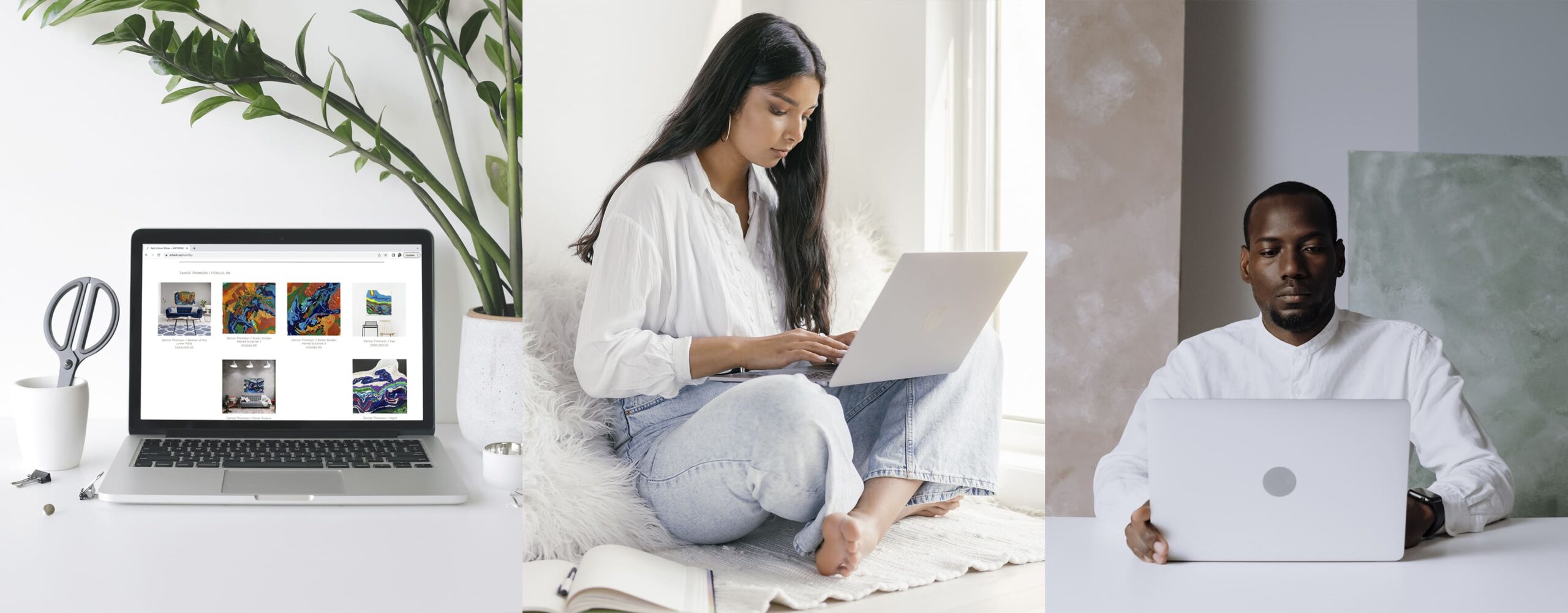In the real state of the online world, a person’s inbox is one of the most valuable and desired spots. For an artist, being able to reach that personal space and establish communication with a potential collector or people interested in their artworks, is key to developing relationships that can translate into different opportunities, from sales to exhibitions, features, interviews, and more.
Coming up with the idea of a newsletter might be the easy part, getting that newsletter into an art lover’s inbox and getting them to open it and read, is part of a bigger communication strategy that starts with one question: what is your main goal as an artist?
Whether you want to bring more awareness to your work, strengthen your brand, or boost your art sales, creating an email marketing campaign is key for a successful strategy.
Building a mailing list and having active subscribers check your newsletter and email communications, is a crucial part, a bridge that can lead you from awareness to achieved goals.
Keep reading to find out how to create a newsletter and mailing list from scratch and how to enrich your current email marketing campaigns.
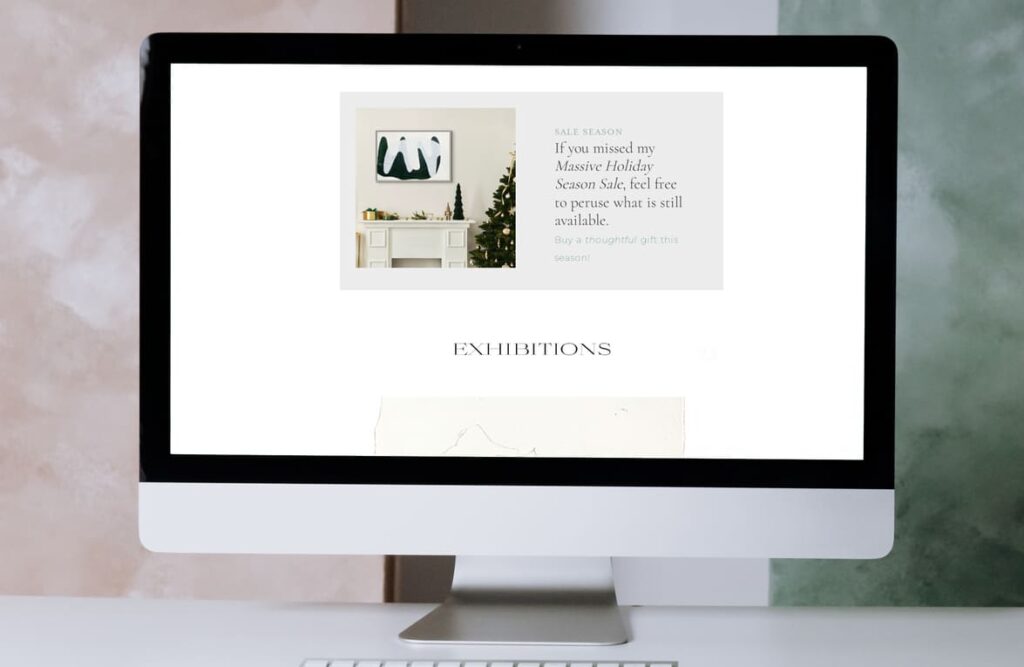
Contents
What is email marketing: a guide for artists
Email Marketing, explained in the most straightforward way, is both a communication strategy and a pillar in any Buyer’s journey It’s based, of course, on email communications that are sent to a specific and segmented audience, using an email management service or EMS, with the intention to drive them further in the marketing funnel and lead them to take a desired action.
Maybe the most well-known form of email marketing is newsletters. These are scheduled and periodical emails that are sent to the audience highlighting valuable content like news, blog posts, articles, etc. But an email marketing campaign goes well beyond this.
Think about it as having a pen pal. From the moment you sign up for a mailing list you receive a series of emails with different intentions.
This email can range from a welcome to the new subscription, content leading you to know more about the artist and their work, providing you with information about their pieces and how to acquire them. It’s a relationship that is fed and it evolves in time.
These are some of the different types of emails you can use in a campaign or strategy:
–Lead nurturing emails: content-centered emails that are sent with the intention of developing the bond with the lead or potential customer, and driving them further in their art buyer’s journey with the intention of having them perform a desired action.
–Welcome email: this is your presentation card, they give the art lover a better sense of who you are and the type of content they will be receiving from you.
–Confirmation emails: a triggered email usually sent in the first minutes of the sign-up process to give the user’ the chance to confirm and verify their intention to join the mailing list.
–Transactional emails: these are emails triggered by a user’s action, this can include, for example, abandoned cart emails, that are sent after a potential collector added an artwork to their shopping cart but didn’t finish the transaction.
Want to know more about how to build a lead through a marketing funnel? Watch the webinar “Art buyer’s journey: tools and concepts to power up your strategy” on ArtPlacer Academy. Login into your account or start your ArtPlacer free trial to access it.
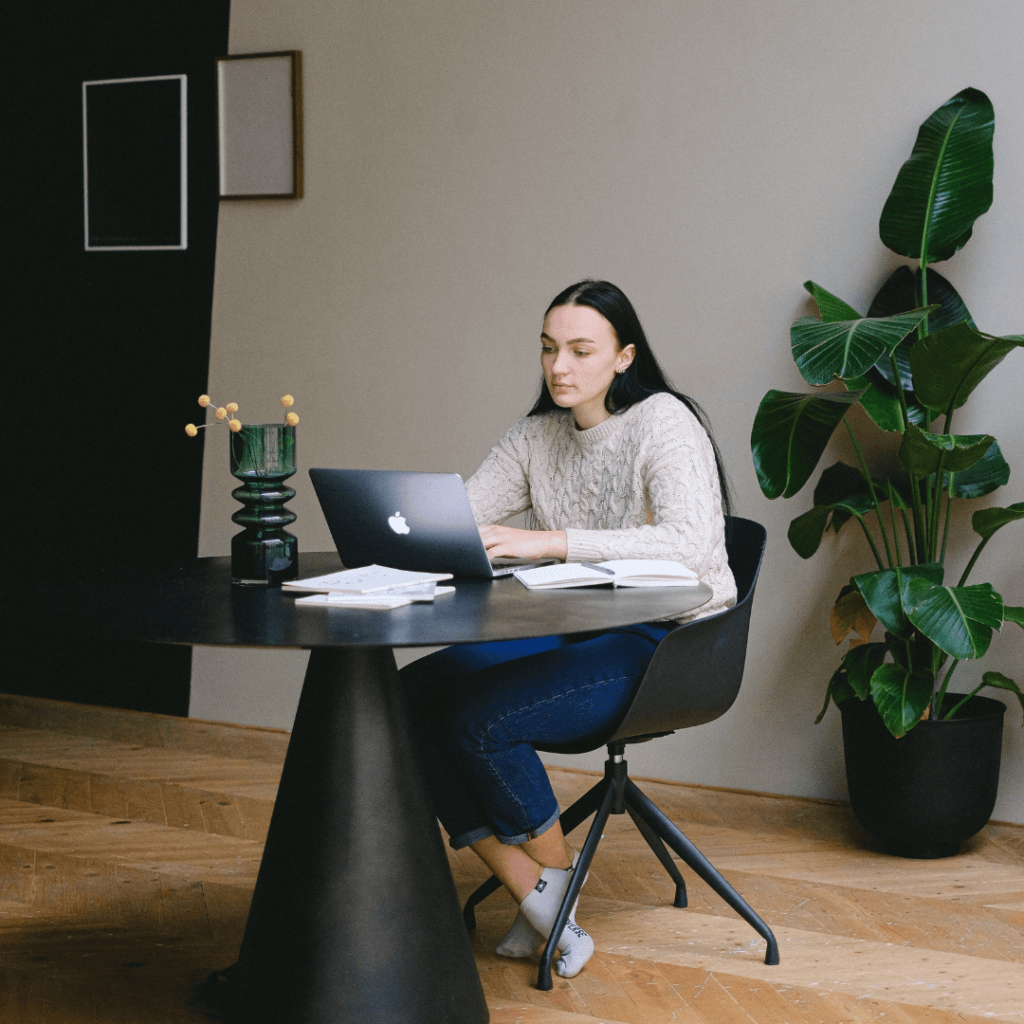
How to create an email marketing campaign
The first step when designing an email campaign is defining a goal: what is your main intention with this marketing push? Do you want to build a community around your work as an artist? Do you want to boost your art sales?
Once that marketing goal is clear you need to define the following aspects of your campaign:
Who’s your audience
Your audience is composed of people that have willingly joined your email list. This audience can be segmented into colleagues and other people you network with inside the art community, potential collectors and those who have already acquired a piece of your artwork, and people who might not have bought a piece but have a connection with the type of work that you do and are interested in you and your process.
What to say
Your strategy should contemplate the interests of each segment of the audience and at the same time provide valuable and interesting content. Something that people will be excited to see. Content may range from blog posts about subjects related to your main interests as an artist, to virtual exhibitions, and more. It needs to have a differentiating factor that is directly related to your brand.
How to say it
Your email marketing campaign should reflect your tone of voice. You can take your artist’s statement as a starting point to define what is your style of communication and how you can make it come to life one email at a time.
What are the benefits of building a mailing list as an artist
Growing a mailing list and feeding it with well-thought emails is part of a bigger strategy that offers many benefits to artists like:
–Strengthening the connection with people who have expressed interest in your work: past buyers, potential collectors, and overall fans of your work. Even a small boost in your retention rate (the number of people who remain in touch after that first interaction or purchase) can lead to a bigger profit.
–Driving traffic to your website, especially to particular publications like announcements, sales, print drops, available artworks, or your blog.
-It builds awareness by helping you create a community around your work.
-Is a way to lead potential art buyers to a direct purchase. Acquiring an interesting piece is just one click away.
-It allows you to nurture your leads, you can offer them exclusive views into your process, a first preview of a piece, early access to art shows, or to an artwork release.
I-t gives you independence as an artist to develop your own brand and storytelling, collectors acquire a piece not only because they identify with it, but because they also relate with the artist, who they are, their life story, and what they represent.
-It helps you build an audience and this is social proof of the impact of your work as an artist that can help you open the door to gallery representations, media publications, and more.
-It’s a good networking tool, you can get people involved in your process and also share content about other artists or creators that influence you.
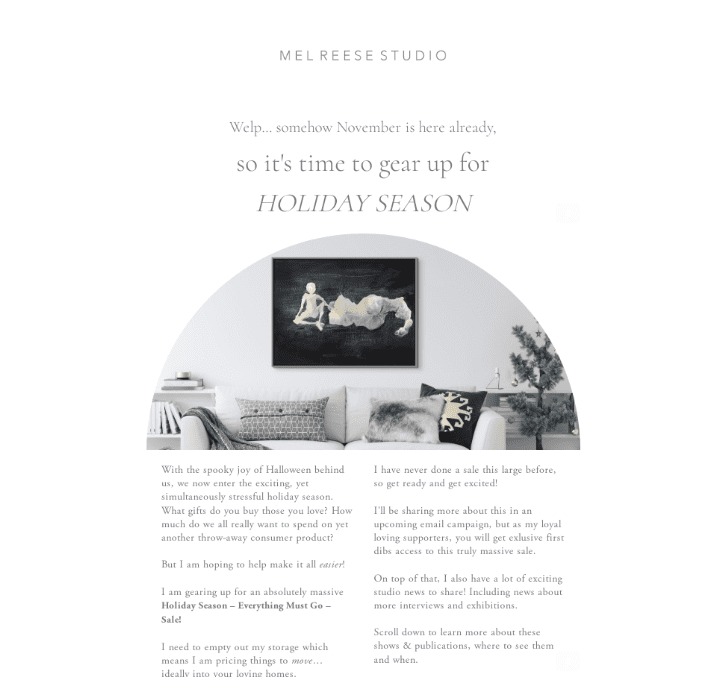
How to build a mailing list: from leads to potential collectors
The first thing you need to know about building a mailing list is that there are international rules that you have to follow in order not to be flagged as spam or undesired and unsolicited content. The best way to make sure you’re complying with these rules is by using digital tools that specialize in this process.
There are several email management services in the market that fit to every need, MailChimp might be one of the most commonly used and it gives you access to predesigned templates, sign-up forms, and other features that will help you set up your email marketing strategy.
But how do you build a mailing list without adding every single one of your contacts? Well, you need to give people a reason to join and the ability to choose.
Today an artist’s website is essential in any art marketing strategy. A good practice is to have a sign-up form for your newsletter on your page to sum new subscribers to your list.
Another way of getting people to join your mailing list is by creating lead-generating content that could appear as a header, pop-up, or in a visible section of your website. Let’s break down this concept. First, a lead is someone who has been in contact with your brand and that could transform into a potential customer. Lead generation is the process of capturing their attention with attractive assets that caters to their needs or interests.
This means you could grow your mailing list by, for example, creating a downloadable guide on how to take care of your art pieces, or creating a digital piece as a background for devices. The “trick” here is to have this content gated, leading the visitors to enter their email in order to acquire this freebie. This could be hosted on a page on your website or inside a blog post.
You are offering something of value for free, and in exchange the visitor gives you their address and permission to send them information, opening up the chance to develop a conversation and take them as a lead through the journey you have designed according to your goals.
And just because this happens in a digital space, it doesn’t mean that it cannot inhabit “in-real-life” spaces. If you are having an in situ exhibition, you could add a QR code on your art fair booth that drives people to the sign-up form to your mailing list. Or directly have a physical form where people can leave their name and email to know more about your work.
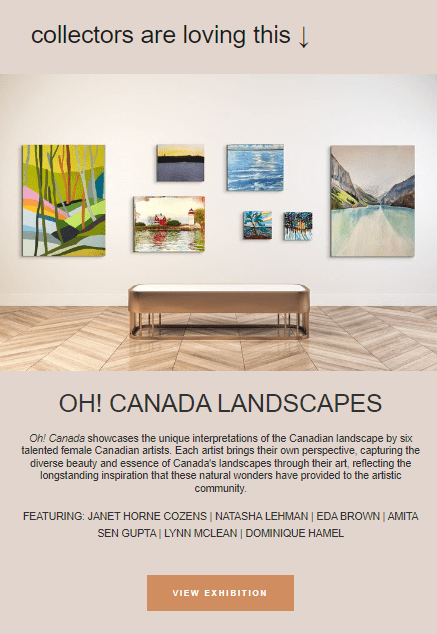
Your newsletter should represent your visual identity and have striking visuals like your art in a room mockup.
How to create an artist’s newsletter that stands out in an inbox
At the center of any good email marketing campaign is content. Yes, today everything is content, but that doesn’t mean that the nuances and depths of your work are lost or transformed into mere “content”, it means that you have the chance to open up conversations around the things that you are passionate about (your medium, subjects, themes, niches) and interact with people who share the same interests.
A newsletter, in particular, is a good way to establish these types of conversations. But how can you build a newsletter that is effective in communicating your message? Follow these steps:
-Give it an interesting name: “Artist’s newsletter #4” will not give you the open click rate (number of subscribers who open and read your email) that you want. Focus on what makes you different, is abstract art your way of expression? You can conceptualize your newsletter around it and give a name that embodies your brand and give your audience a better sense of the type of content they can expect.
–Build an attractive subject: you want to capture people’s attention and pop up in their inbox in a sea of other emails. You need a good attention-grabbing subject that tells them what they can find inside and gives them a reason to click. It’s not the same to say “new art available” than “5 reasons why digital art is my new source of inspiration”.
–Have engaging visuals: our newsletter is a good place to showcase your artwork in new and creative ways. Think outside the canvas. With ArtPlacer Room Mockups you can create exquisite images of your art in place, reflecting different aesthetics and styles, and you can easily select the precise size for an email banner with the Crop tool.
–Give it a clear call to action: do you want the subscriber to engage in a long read, visit your latest exhibition or check your e-commerce? Give them a clear action to follow and link to the page you want them to visit, and of course, a good reason to go there and learn more.
Now that you know the basics of email marketing is time to build your own strategy!


